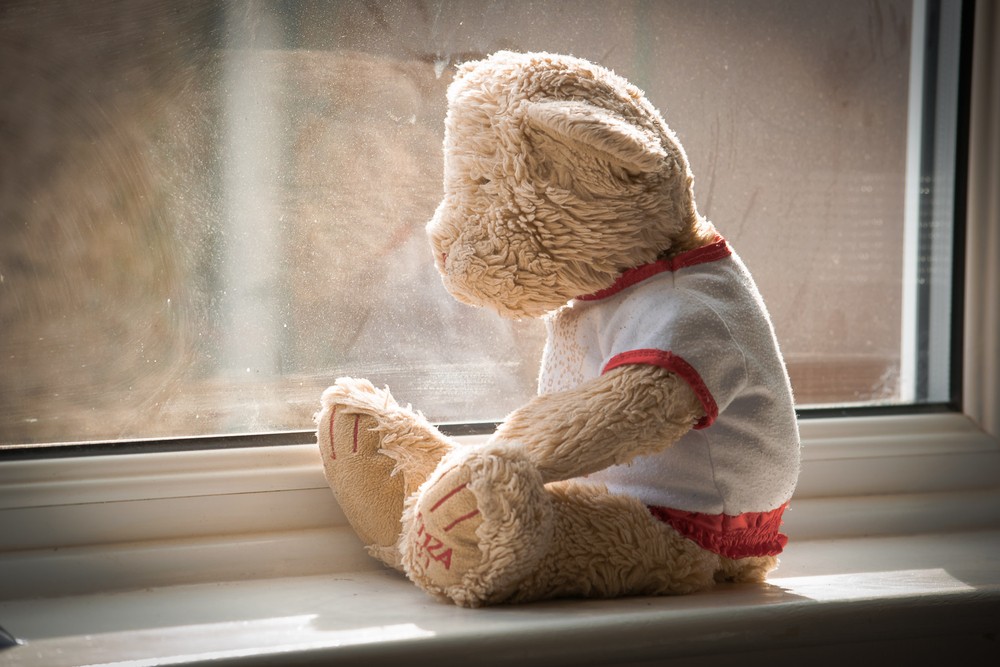Recognizing mental illness in children
Parents must understand what kinds of mental illnesses can affect children, as well as the causes and treatment methods, to support their children growing up.
Change text size
Gift Premium Articles
to Anyone
 Diagnosing mental illness in children is difficult as many behaviors that can be symptoms of mental health problems can also occur as part of a child's normal development. (Shutterstock/-)
Diagnosing mental illness in children is difficult as many behaviors that can be symptoms of mental health problems can also occur as part of a child's normal development. (Shutterstock/-)
Like adults, children can also experience mental health problems, which could affect their growth and development.
It is not easy to identify mental health issues in children. Some cases of mental illness in children are genetic.
Parents must understand what kinds of mental illnesses can affect children, as well as the causes and treatment methods, to support their children growing up.
Symptoms
Anxiety disorders
This issue is also common in adults, but children have different symptoms. If your child responds to certain things with fear and anxiety, cries or screams, it may be a symptom of the condition. Sometimes, in severe cases, physical signs such as a rapid heartbeat or sweating can be seen in children with anxiety disorders.
Attention deficit hyperactivity disorder
Children who suffer from ADHD have problems with concentration or maintaining their attention. They become bored or frustrated in certain situations. Also, they can struggle to follow instructions and tend to move around constantly.
Eating disorders
This problem is commonly seen in children with mental health problems. They find it difficult to eat or do not want to eat. They may have intense emotions and attitudes associated with food.
Learning and communication disorders
These disorders affect children’s ability to store and process information. Children with learning and communication difficulties have problems with their speech, expressing ideas and thoughts. It may be hard for children to learn new things.
Elimination disorders
Children who experience these disorders have problems with behavior related to using bathroom. They cannot control their need to urinate, leading to bed-wetting or enuresis.
Affective disorders
These disorders are related to moods and feelings. They cause children to easily and rapidly change moods and be unable to control their feelings. Affective disorders include depression and bipolar disorder, which also involve persistent feelings of sadness.
Pervasive behavior disorders
Pervasive behavior disorders tend to make children confused in their thinking and have difficulties in exploring and understanding the world around them. They also involve delays in the development of basic skills, such as socialization, communication or imagination.
Schizophrenia
Schizophrenia is a serious brain disorder distorting the way children think, act, express emotions, perceive reality and relate to others. Children who have schizophrenia could have problems with functioning in society, at school and in relationships.
Tic disorders
Children suffering from tic disorders may make sudden movements or utter sounds repeatedly and uncontrollably, such as blinking their eyes or constantly twitching their nose without reason. Although tic disorders are harmless and temporary, they may affect children’s daily lives and relationships.
Disruptive behavior disorders
Disruptive behavior disorders cause children to defy rules, leading to disruptions in environments such as school, home and social gatherings.
These disorders are very common in children, but can be treated effectively if you identify the issue and talk with your doctor about your children’s symptoms.
(Read also: What you need to know about depression)
Causes
There is no way to pinpoint exactly what causes mental illness. Often a combination of factors lead to mental health problems, including heredity, biology, psychological trauma and environmental stress.
Family history: People who have a family member with mental illness can be more prone to issues. Genetic or environmental factors may create this connection.
Biology: As in adults, many mental health problems in children have been linked to the abnormal functioning of particular brain regions that control emotions, thinking, perceptions and behavior. Head trauma can sometimes lead to changes in mood and personality.
Psychological trauma: Some mental disorders might be triggered by psychological trauma, such as severe emotional, physical, or sexual abuse; an important early loss, such as the loss of a parent; and neglect.
Environmental stress: Stressful or traumatic events can trigger a disorder in a person with a predisposition to mental illness.
Most of the time mental illnesses develop over time and are triggered by a combination of risk factors.
Warning signs
Warning signs that your child might have a mental health condition may include:
- Withdrawal, expressing feeling of sadness for more than two weeks or severe mood swings that create problems at school and home.
- Being easily overwhelmed and anxious for no reason. Constantly worrying or fearing something. Physical symptoms such as increased heart rate or breathlessness.
- Sudden, drastic changes in behavior that are risky and out of control.
- Trouble focusing or sitting still, both of which might lead to poor performance at school.
- Sudden loss of appetite and attempting to lose weight. Frequent vomiting or using laxatives to get rid of food in the stomach.
- Frequent headaches and stomachaches.
- Self-injury or self-harm such as cutting or burning, or attempted suicide.
- Using drugs or alcohol to try to cope with feelings.
Tests and diagnoses
As with adults, mental disorders in children are diagnosed based on signs and symptoms. However, diagnosing mental illness in children can be extremely difficult. Many behaviors that can be seen as symptoms of mental health problems, such as shyness, anxiety (nervousness), strange eating habits and outbursts of temper, can also occur as part of a child's normal development.
Behaviors become symptoms when they occur very often, last a long time, occur at an unusual age, or cause significant disruptions to the child's and/or family's life.
If symptoms are present, a doctor will begin an evaluation by performing a complete medical and developmental history and physical exam. Although there are no laboratory tests to specifically diagnose mental disorders, the doctor might use various diagnostic tests, such as neuroimaging and blood tests, to rule out physical illness or medication side effects as the cause of symptoms.
If no physical illness is found, the child may be referred to a child and adolescent psychiatrist or psychologist — health-care professionals who are specially trained to diagnose and treat mental illness in children and teens.
Psychiatrists and psychologists use specially designed interview and assessment tools to evaluate children. The doctor bases a diagnosis on reports of the child's symptoms and observation of their attitude and behavior. The doctor often relies on reports from the child's parents, teachers, and other adults, because children often have trouble explaining their problems or understanding their symptoms. The doctor then determines if the child's symptoms point to a specific mental disorder.
Treatment
Like other medical issues, mental illness can be treated.
Treatment for mental illness can involve medication, psychotherapy and creative therapy. Experts are still exploring which treatments work best for which conditions in children. For now, many of the treatment options used for children, including many medications, are the same as those used in adults but with different dosages or intensity.
The most common treatment options include the following.
Medication: Drugs used to treat mental illness in children include antipsychotics, antidepressants, anti-anxiety drugs, stimulants and mood stabilizing drugs.
Psychotherapy: Psychotherapy (a type of counseling often simply called therapy) addresses the emotional response to mental illness. It is a process in which trained mental health professionals help people deal with their illness, often by talking through strategies for understanding and dealing with their symptoms, thoughts and behaviors. Types of psychotherapy often used with children are supportive, cognitive-behavioral, interpersonal, group and family therapy.
Creative therapies: Options such as art therapy or play therapy might be helpful, especially with young children who might have trouble communicating their feelings.
If you see signs in your child for a long period, it may be possible that they have a mental illness. Mental illness is nothing to be afraid of and can be effectively treated. Consult a therapist or doctor instead of simply waiting for symptoms to stop. (kes)










